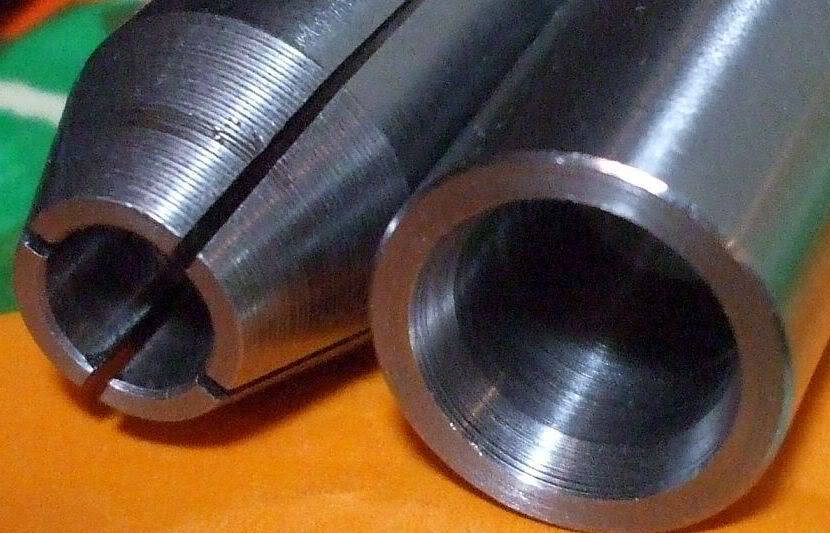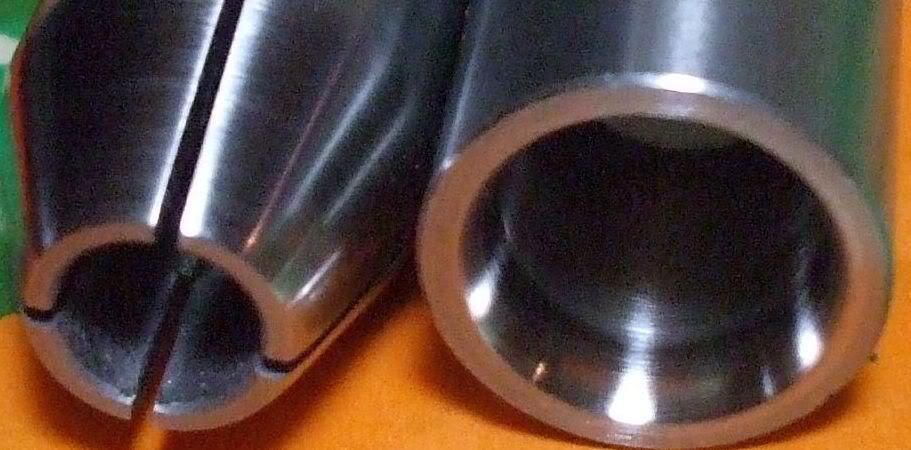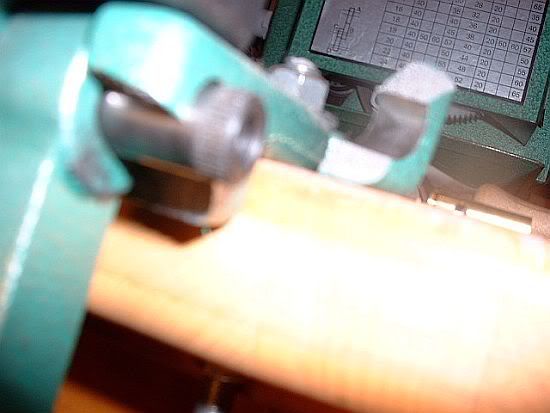Hello: I was wondering iwhat you guys that reload for accuracy think about the Lee Collet neck sizing die. Is it worth using?
Join the Hide community
Get access to live stream, lessons, the post exchange, and chat with other snipers.
Register
Download Gravity Ballistics
Get help to accurately calculate and scope your sniper rifle using real shooting data.

Install the app
How to install the app on iOS
Follow along with the video below to see how to install our site as a web app on your home screen.
Note: This feature may not be available in some browsers.
-
Quick Shot Challenge: What’s the most underrated gear you never leave home without?
Contest ends Wednesday, join now for the chance to win free Hide merch!
Join contest
You are using an out of date browser. It may not display this or other websites correctly.
You should upgrade or use an alternative browser.
You should upgrade or use an alternative browser.
Lee Collet Neck sizing die
- Thread starter greggrissom
- Start date
Here's a few thread son the subject:
http://www.snipershide.com/shooting...tch-quality-ammo-loaded-inexpensive-dies.html
http://www.snipershide.com/shooting/snipers-hide-reloading/219835-lee-collet-die.html
http://www.snipershide.com/shooting...die-not-sizing-neck-like-i-thought-would.html
http://www.snipershide.com/shooting/snipers-hide-reloading/221183-neck-dies-bushing-vs-collet.html
http://www.snipershide.com/shooting...tch-quality-ammo-loaded-inexpensive-dies.html
http://www.snipershide.com/shooting/snipers-hide-reloading/219835-lee-collet-die.html
http://www.snipershide.com/shooting...die-not-sizing-neck-like-i-thought-would.html
http://www.snipershide.com/shooting/snipers-hide-reloading/221183-neck-dies-bushing-vs-collet.html
I took populations of 25 pieces of 223 brass and fired and sized them repeatedly while dedicating each population of brass to a die.
I measured run out and case growth.
Of 5 dies tested, to my surprise the most expensive was the worst, a Redding FL S die.
To my surprise the cheapest was the best, a Lee collet neck die.
I reload 62 different cartridges, er 63 as of last night, I added 38-40.
I now buy with each new cartridge to reload, if possible:
1) a Forster FL sizer and have the neck hone out
2) a Forster seater die and chamfer or epoxy the seating stem
3) Lee collet neck die and polish the:
..a) collet
..b) collar
..c) mandrel/ decapping pin


It does not make the ammo any more concentric, it just makes the press handle movement feel smoother.
Lately, Lee must have been reading these posts, as their dies are getting smoother.
I measured run out and case growth.
Of 5 dies tested, to my surprise the most expensive was the worst, a Redding FL S die.
To my surprise the cheapest was the best, a Lee collet neck die.
I reload 62 different cartridges, er 63 as of last night, I added 38-40.
I now buy with each new cartridge to reload, if possible:
1) a Forster FL sizer and have the neck hone out
2) a Forster seater die and chamfer or epoxy the seating stem
3) Lee collet neck die and polish the:
..a) collet
..b) collar
..c) mandrel/ decapping pin


It does not make the ammo any more concentric, it just makes the press handle movement feel smoother.
Lately, Lee must have been reading these posts, as their dies are getting smoother.
I basically do what Clark does above...but haven't done that chamfer or epoxy of the seating stem?
Clark...what are you doing specifically? What issue are you trying to address?
Doing the polishing step on the LCD is time well spent...no more 'stickiness', and a very smooth motion. I set my LCDs up so I can do a full press pull (which is different from their directions). It takes a little bit on playing with, but I really like the end result.
Clark...what are you doing specifically? What issue are you trying to address?
Doing the polishing step on the LCD is time well spent...no more 'stickiness', and a very smooth motion. I set my LCDs up so I can do a full press pull (which is different from their directions). It takes a little bit on playing with, but I really like the end result.
Forster chamfers the seating stem mouth.
I chamfer the chamfer.
I spin the seating stem and round the edge with a fine wet and dry paper like 400 grit.
That way the bullets don't get ring or get stuck.
The shape of the seating stem mouth is a compromise for many bullet shapes.
Glass bedding the mouth is only just right for one bullet shape.
I chamfer the chamfer.
I spin the seating stem and round the edge with a fine wet and dry paper like 400 grit.
That way the bullets don't get ring or get stuck.
The shape of the seating stem mouth is a compromise for many bullet shapes.
Glass bedding the mouth is only just right for one bullet shape.
Thanks guys for the help. After my initial FL resize with a forster FL sizing die, I think I will get a Lee collet die and fun them through there.I'm assuming after a couple of neck sizings, I will have to go back to the FL sizer.
Everything works better if the brass stays dedicated to one rifle:
1) Neck sized cases will fit
2) When it is done, the shoulder only gets pushed back .001" or .002", not extra for some other rifle with smaller headspace.
1) Neck sized cases will fit
2) When it is done, the shoulder only gets pushed back .001" or .002", not extra for some other rifle with smaller headspace.
I broke a rockchucker camming over with an 8mm lee collet neck die 10 years ago.
RCBS sent me an entire new rockchucker press, even though it was my fault.

This is the only pic I have, and I had to send the broken part to RCBS.
RCBS sent me an entire new rockchucker press, even though it was my fault.

This is the only pic I have, and I had to send the broken part to RCBS.
Lee neck dies are great. I too have had the same results with the Redding dies. I load a lot of different rounds and every time I pull down my "nice set" of Redding dies I end up asking myself, "I paid how much for this?!." Some of my Lee collet dies have been machined a little rougher than others. Kinda like the pictures above. They don't take much to clean up though. If I had to do that to an expensive die I'd be pissed. Makes as good as ammo and anything else, just for less. I like a press with a positive stop like the Lee Classic Cast so there is no cam over issue to ever have to worry about.
I too have struggled with excessive runout I was originally getting with the high dollar Redding neck dies. Once I went with the Lee Collet die and the Lee Classic Cast press, I finally got the low runout measurements I was looking for. The feature of not camming over with the Collet Die and the Classic Cast press provides me with a great feel to the neck sizing process.
Those Redding neck sizer dies may be right at home on tighter necked chambers, though. I am shooting a stock barrel with a SAMMI spec chamber, so there is a lot of brass movement associated with sizing necks as compared to brass shot out of a custom chamber.
I still use the Redding competition seater, though. That definitely keeps runout low as compared to my other seating dies.
Those Redding neck sizer dies may be right at home on tighter necked chambers, though. I am shooting a stock barrel with a SAMMI spec chamber, so there is a lot of brass movement associated with sizing necks as compared to brass shot out of a custom chamber.
I still use the Redding competition seater, though. That definitely keeps runout low as compared to my other seating dies.
I too have struggled with excessive runout I was originally getting with the high dollar Redding neck dies. Once I went with the Lee Collet die and the Lee Classic Cast press, I finally got the low runout measurements I was looking for. The feature of not camming over with the Collet Die and the Classic Cast press provides me with a great feel to the neck sizing process.
Those Redding neck sizer dies may be right at home on tighter necked chambers, though. I am shooting a stock barrel with a SAMMI spec chamber, so there is a lot of brass movement associated with sizing necks as compared to brass shot out of a custom chamber.
I still use the Redding competition seater, though. That definitely keeps runout low as compared to my other seating dies.
I use the exact same setup...collet die + comp seater for every rifle caliber I own. I also use a Redding body die. My 308 loads will shoot cloverleafs all day long. I'm working on a 260 load now, and initial testing last week produced laser-like accuracy. I also noticed my 260 collet die is MUCH more polished than my 308 collet die. I had to take a dremel + polishing compound to the 308 die to get it to shine...this wasn't necessary with the 260 die.
When using the collet die are you using the body die every firing? And in what order (body 1st than collet?)
In loading for a 7mm/08, cases I sized with a Lee Collet Die produced ammunition with significantly poorer accuracy that that assembled with new or full length sized brass.
In loading for a 7mm/08, cases I sized with a Lee Collet Die produced ammunition with significantly poorer accuracy that that assembled with new or full length sized brass.
Interesting. That sounds different from the norm here.
What technique did you use when using the Lee collet die?
I don't start pushing the shoulder back with my body die until the bolt starts getting hard to close.
As for the Lee collet die, I can take brass that has .003-.005 runout and run it through my Lee collet die and cut that runout in half. I didn't like mine at first but now that is all I'll buy for precision loading. Still full length my AR brass but who cares about ARs?
As for the Lee collet die, I can take brass that has .003-.005 runout and run it through my Lee collet die and cut that runout in half. I didn't like mine at first but now that is all I'll buy for precision loading. Still full length my AR brass but who cares about ARs?
Interesting. That sounds different from the norm here.
What technique did you use when using the Lee collet die?
First of all I've used Lee Collet Dies since the 1990s. I've used them for a number of cartridges including 308 Winchester, 300 Weatherby Magnum, 375 H&H Magnum and probably some others. I don't think I could see actual improvement in accuracy in any of those but it wasn't worse than with regular dies and the big advantage was no lube needed. Then came my Encore handgun in 7mm/08 Remington. Using new brass I got it shooting quite well and then made some reloads with cases sized with the Lee Collet Die and was surprised at the significant accuracy deterioration. I then assembled loads using full length sized cases and accuracy was good again.
I think Lee Collet Dies work well in many instances but they aren't as fantastic as Lee would have you believe.
I have the collet dies for my .308s and .243s. Just sized some .243s last night and had to look really hard to see the needle jiggle on the runoit dial.
Appreciate the input.First of all I've used Lee Collet Dies since the 1990s. I've used them for a number of cartridges including 308 Winchester, 300 Weatherby Magnum, 375 H&H Magnum and probably some others. I don't think I could see actual improvement in accuracy in any of those but it wasn't worse than with regular dies and the big advantage was no lube needed. Then came my Encore handgun in 7mm/08 Remington. Using new brass I got it shooting quite well and then made some reloads with cases sized with the Lee Collet Die and was surprised at the significant accuracy deterioration. I then assembled loads using full length sized cases and accuracy was good again.
I think Lee Collet Dies work well in many instances but they aren't as fantastic as Lee would have you believe.
Similar threads
- Replies
- 9
- Views
- 566
Reloading Equipment
Dies: 270 Win, 8x57 Mauser, 6.5x55 Swedish, 44 Mag/Special, 40 S&W/10mm
- Replies
- 2
- Views
- 234
